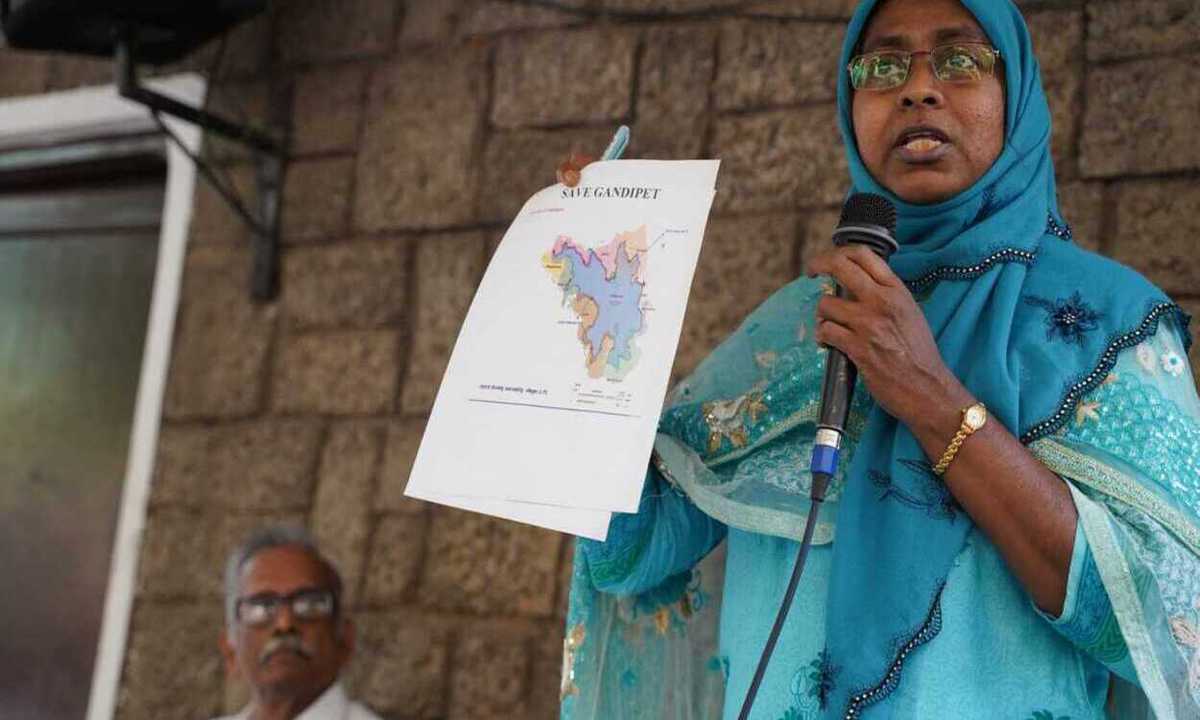
Hyderabad: Activists and concerned citizens of the city came together at an awareness meeting organized by the ‘Long Live Lakes’ campaign on Sunday and expressed alarm on Chief Minister K Chandrasekhar Rao’s recent idea to repeal GO 111.
The GO is intended to restrict any form of major industrial and construction activity in a radius of 10 km of the full tank of the Himayat Sagar and Osman Sagar that have been a vital source of drinking water for Hyderabad for decades. It created a buffer zone to avoid activities that lead to pollution in the catchment areas.
“Hyderabad, as we know, will end if GO 111 is repealed,” retired Scientist and Environmentalist Babu Rao Kalapala remarked at the meeting.
Dr. Lubna Sarwath, a seasoned activist on environmental issues led the charge and has questioned the competency of the Expert Committee that was appointed by the state government for a report on the relevance of GO 111.
“The Chief Minister, until now, never spoke about controlling the floods in the city. We all saw what happened in 2020 and 2021. He has also never uttered anything about illegal encroachments and vanity projects that have come up right inside the Himayat Sagar and the Osman Sagar lake. Nothing has been done about those illegalities even until now,” she said.

She also expressed grave concern for the future of the Mrugavani National Park that exists in between the twin reservoirs and the biodiversity that is going to be affected due to the government’s idea. “If we don’t let water percolate, how will we get groundwater? Hyderabad’s weather will drastically be affected. Temperatures will go up and that will affect both the mental and the physical health of citizens,” she said.
On the CM’s remarks in the Assembly on the ‘redundancy’ of GO 111, Lubna said that the CM made false statements and asked the speaker to expunge his remarks.
GO 111 is pertinent to 1.32 lakh acres of land across 84 villages including mandals that are in proximity to Hyderabad. These villages come under the 10-km catchment area of Osman Sagar and Himayat Sagar. During the election campaigning for the 2018 Assembly Elections, KCR had vowed to repeal the GO within months of TRS coming to power.
Babu Rao Kalapala said that the idea to repeal GO 111 is coming from a place of ‘human arrogance’ and that many have imagined that humanity can live apart from nature and also hold control over it.
“We are all now so used to looking at air, water, and every other thing as a marketable commodity. They are saying that the development of 1.32 lakh acres has been halted because of GO 111. All of it is agricultural land. What’s development in Agriculture? Is the conversion of tillable land into real estate called development? If farmers till the land and make money out of it, you can call it development. Under what logic does converting all the land into real estate be called development? Spreading a concrete jungle around the city isn’t development. I came to Hyderabad in the seventies. Now I don’t feel good about living here. Back then Hyderabad was like a big village. Human relations were different. Today in this concrete jungle, people don’t know who’s living next to each other. Should we call this development?” he asked.

Babu Rao also asked the government whether the increase in the effect of floods has been considered. “If such a big chunk of land is converted into a concrete jungle and thereby not allowing water to sink into the soil, what will be the quantum of the flood that the city will face? We have already seen how floods are in Hyderabad. This plan will increase the effect of floods. Has a scientific study been conducted on this aspect? Who is part of the expert committee? What is the competency of the members? Who are the Ecology experts on the committee? What questions did the government pose at them inorder to find out?” he questioned.
The retired scientist also remarked that in current days, science is on sale. “If a political decision is being made, by using a few ‘science’ people, heavily polluting industries and many powerful people are finding all wrong ways to get the ‘scientific approval’ stamp. Today science is for sale. It should be used for the sake of universal harmony but not for the sake of industrialists. I wouldn’t be even surprised if someone comes with a report recommending that the lakes can be removed in totality,” he said.
Babu Rao also questioned the claim of the chief minister that the city’s water needs have been met for the next 100 years. “How much water are you providing for people who are living in the slums and bastis? Krishna and the Godavari have become the central points for pollution. The quality of Godavari river water is extremely bad, according to the Central Water Commission. Even if you purify that water for pollutants and supply it, have you ever tested the water for pesticide pollution? Due to increased levels of Estrogen released into water, male frogs are turning into females and are laying eggs,” he said.

Babu Rao said that lakes are not just for the sake of drinking water but they also have an ecological function. “A lot of us still rely on borewells for water. How will the bore wells find water if not for lakes? We have lost a lot of lakes in the past. How long will we continue like this?” he asked.
Osman Sagar and Himayat Sagar were constructed in 1920 and 1927, respectively, under Mir Osman Ali Khan, the last Nizam, after the catastrophic 1908 floods in Hyderabad that killed thousands of people. The Hyderabad Metropolitan Water Supply and Sewerage Board (HMWSSB) currently draws 30 million gallons of water from the two reservoirs on a daily basis.
Citizens and activists demanded that the government find alternative ways to improve the lives of farmers in the catchment area rather than destroy ecology for the sake of a powerful real estate lobby planning to exploit the huge chunk of land for its ‘greed’.

